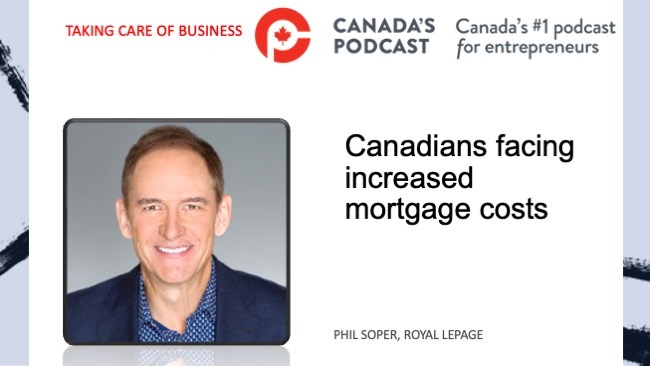Real gross domestic product (GDP) edged up 0.1 per cent in February, following a 0.6 per cent increase in January. Both services-producing industries and goods-producing industries edged up 0.1 per cent. Overall, 12 of 20 subsectors increased, reported Statistics Canada on Friday.

fauxels
“Advance information indicates that real GDP edged down 0.1 per cent in March. Decreases in retail and wholesale trade sectors, as well as in the mining and quarrying (except oil and gas) subsector were partially offset by increases in the public sector, in professional, scientific and technical services, and in administrative and support, waste management and remediation services. This advance information indicates a 0.6 per cent increase in real GDP by industry in the first quarter of 2023. Owing to its preliminary nature, these estimates will be updated on May 31, 2023, with the release of the official GDP data for March and the first quarter of 2023,” said the federal agency.
The professional, scientific, and technical services sector rose 0.6 per cent in February, as seven out of nine subsectors posted gains in the month. Computer systems design and related services (+0.9 per cent) has posted uninterrupted gains since May 2021, and continues to be among the top contributors to growth in the sector, it said.
“The construction sector expanded 0.3 per cent in February, as all subsectors were up for a second month in a row,” said the report.
“Residential building construction (+0.3 per cent) was the top contributor to growth in the month, posting a second consecutive increase to start the year after declining in the last five months of 2022. Home alterations and improvement, which was a large contributor to the downward trend in residential building construction activity in 2022, drove the gains in both January and February 2023.”
After sprinting out of the gate to start 2023, the Canadian economy had already hit a wall by March, said Andrew Grantham, an economist with CIBC Economics.
“For Q1 as a whole, the 2.5 per cent growth rate is very close to the 2.3 per cent forecast that the Bank of Canada had in its April MPR (Monetary Policy Report) , and as such today’s data shouldn’t change the narrative of policymakers. Until there are clearer signs that slowing growth is also helping to ease core inflation, the Bank of Canada will continue to lean towards raising interest rates, even if a hike is not ultimately needed, with rate cuts not coming until 2024,” he said.
Marc Ercolao, Economist with TD Economics, said Canadian growth continues to exhibit strength.
“Today’s GDP numbers corroborate the BoC’s recent guidance that monetary policy may need to be ‘restrictive for longer’. This doesn’t necessarily mean additional rate hikes are on the table, but it does provide further evidence that the start of rate cuts are less likely to occur in 2023. Our view is that the BoC will hold the policy rate into 2024 as lagged effects of interest rate hikes still need time to work their way through the economy,” he said.
“The federal public service strike, affecting some 100,000 workers, enters into its tenth day and negotiations are still ongoing. By loose estimation, a strike of this duration could shave 0.2 percentage points (ppts) off of April’s GDP. However, as workers come back on the job, growth in subsequent months would be boosted.”
Nathan Janzen, Assistant Chief Economist with the Royal Bank of Canada, said the surge in GDP in January increasingly looks to have been a head-fake, with activity softening over February and March.
“And consumer spending headwinds continue to build as higher interest rates flow gradually through to household borrowing costs with a lag. With GDP growth tracking weak momentum into Q2, the BoC isn’t expected to hike interest rates again. Although inflation is also still too firm to justify a quick shift to cuts, even with the economy showing signs of softening,” he said.
 (Mario Toneguzzi is Managing Editor of Canada’s Podcast. He has more than 40 years of experience as a daily newspaper writer, columnist, and editor. He worked for 35 years at the Calgary Herald, covering sports, crime, politics, health, faith, city and breaking news, and business. He works as well as a freelance writer for several national publications and as a consultant in communications and media relations/training. Mario was named in 2021 as one of the Top 10 Business Journalists in the World by PR News – the only Canadian to make the list)
(Mario Toneguzzi is Managing Editor of Canada’s Podcast. He has more than 40 years of experience as a daily newspaper writer, columnist, and editor. He worked for 35 years at the Calgary Herald, covering sports, crime, politics, health, faith, city and breaking news, and business. He works as well as a freelance writer for several national publications and as a consultant in communications and media relations/training. Mario was named in 2021 as one of the Top 10 Business Journalists in the World by PR News – the only Canadian to make the list)
About Us
Canada’s Podcast is the number one podcast in Canada for entrepreneurs and business owners. Established in 2016, the podcast network has interviewed over 600 Canadian entrepreneurs from coast-to-coast.
With hosts in each province, entrepreneurs have a local and national format to tell their stories, talk about their journey and provide inspiration for anyone starting their entrepreneurial journey and well- established founders.
The commitment to a grass roots approach has built a loyal audience with over 120,000 downloads and thousands of subscribers on all our social channels and YouTube. Canada’s Podcast is proud to provide a local, national and international presence for Canadian entrepreneurs to build their brand and tell their story.





